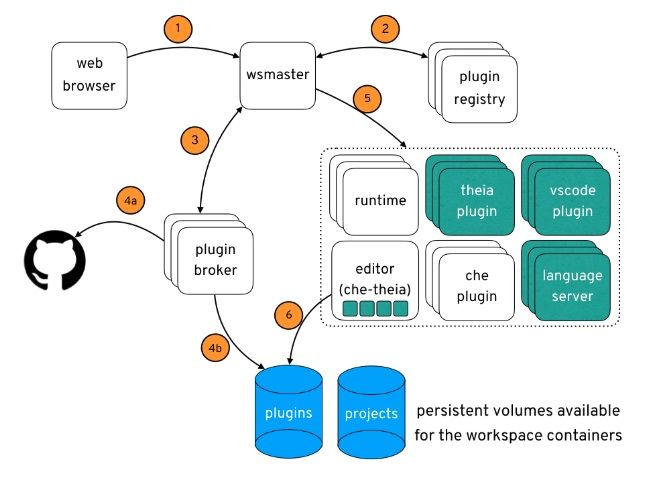

- #Red hat codeready workspaces for free#
- #Red hat codeready workspaces software#
- #Red hat codeready workspaces plus#
Using generateName means a user can have multiple instances of this workspace at the same time. You also have the option of a name prefix, in which case the system will generate the rest of the name (e.g., generateName: javamaven-). This section is required, and in this case name is specified as the name of this workspace (wksp-javamaven). The following devfile defines a workspace that has Java language support, includes the Maven build tool, and has two custom commands. This article will attempt to demystify the devfile. This file, called devfile.yaml, is powerful and complex. The real power comes by defining a workspace using a YAML file-a text file that can be stored and versioned in a source control system such as Git. Workspaces mimic the environment of a PC, an operating system, programming language support, the tools needed, and an editor. Based on the upstream project Eclipse Che 7, CRW brings even more of the "Infrastructure as Code" idea to fruition.
#Red hat codeready workspaces for free#
Red Hat said CodeReady Workspaces is available now for free to all OpenShift users.With the exciting advent of CodeReady Workspaces (CRW) 2.0 comes some important changes. Not to mention the benefit of running developer and systems infrastructure on the same platform, allowing for consistent support, monitoring and operational frameworks.” “This enables critical consistency for building next-generation applications. “Enterprise want consistent environments for their developers and they can achieve this with CodeReady,” said Holger Mueller, principal analyst and vice president of Constellation Research Inc. So developers can simply send a link to their colleagues that allows them to collaborate on whatever projects they’re working on.
#Red hat codeready workspaces plus#
There’s also a new feature for sharing code, called “Factories.” This allows developers to create a template of applications built using the IDE that includes the location of the source code, runtime and tooling configuration, plus any commands needed.

#Red hat codeready workspaces software#
Developers don’t need to be familiar with Kubernetes to get started as the IDE handles the complexities of the orchestration software all by itself.

Red Hat also promotes CodeReady Workspaces’ ease of use. Previously, with IDEs not native to Kubernetes, developers could only tap into Kubernetes during the final phase of testing and deployment.Īs a result, one of the main benefits of CodeReady Workspaces is that it can eliminate the need to move applications from development platforms to production systems once they’re complete. Red Hat says it’s a comprehensive development environment that allows developers to manage their code, its dependencies and artifacts, directly inside OpenShift Kubernetes pods and the containers they host.Įssentially, it allows developers to take advantage of Kubernetes’ orchestration capabilities from the get go, as soon as they begin writing their apps. Kubernetes is the most commonly used software for managing large clusters of containers.įor developers, CodeReady Workspaces is being billed as the missing piece of the container app development puzzle. OpenShift is an open-source software platform that’s used to develop, deploy and manage “containerized” applications, which can be built once and run on any computing platform. Red Hat says CodeReady Workspaces is optimized for use with its Red Hat OpenShift platform and is the first IDE that can run inside a Kubernetes cluster. The company, which will soon be acquired by IBM Corp., today announced what it says is the industry’s first Kubernetes-native, browser-based integrated development environment or IDE, called Red Hat CodeReady Workspaces. is trying to make life easier for developers who build their applications using software containers and manage them with Kubernetes.


 0 kommentar(er)
0 kommentar(er)
